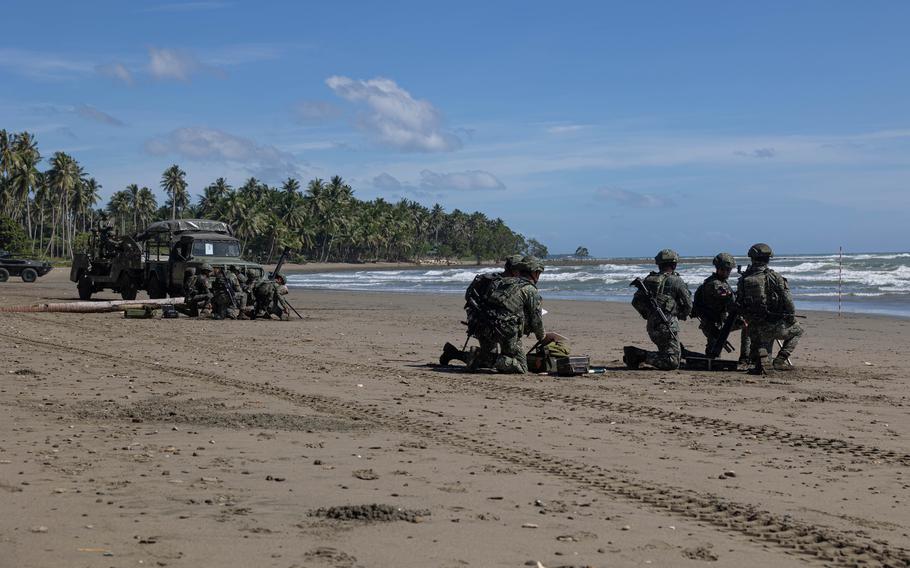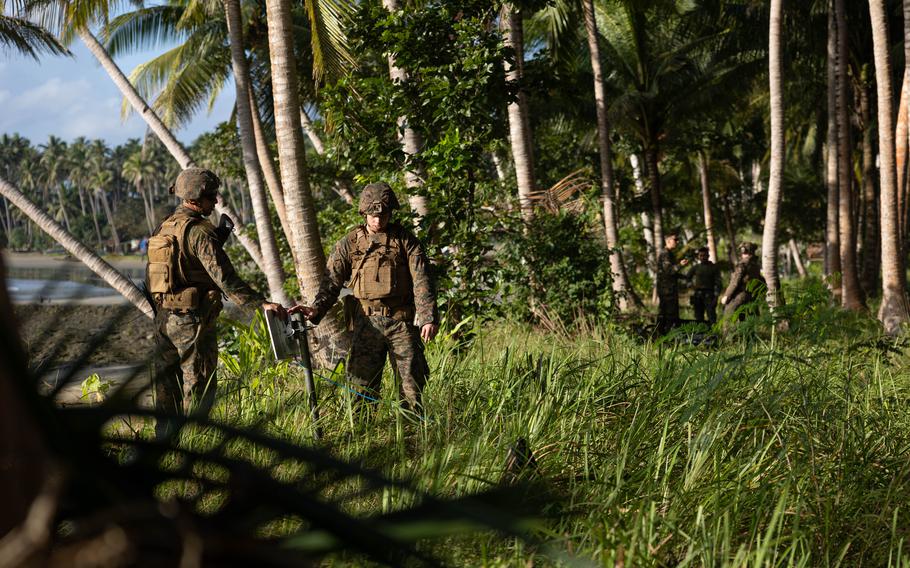
Members of the Philippines’ 3rd Marine Brigade practice defending Kamuning beach in Palawan on Nov. 16. (Savannah Norris/U.S. Marine Corps)
American and Philippine Marines practiced their defense of a beach Thursday on the island of Palawan, close to disputed sea territory where Philippine and Chinese vessels have clashed in recent weeks.
Members of Marine Rotational Force–Southeast Asia are taking part in the annual Kamandag exercise involving 2,000 troops, mostly from the two countries, that concludes Monday after 12 days on Palawan and the Philippines’ main island of Luzon.
The exercise takes place during a period of increased tension between Manila and Beijing in the South China Sea. In recent months, Chinese coast guard and maritime militia have tried unsuccessfully to block Philippine vessels resupplying the BRP Sierra Madre. The grounded World War II-era vessel serves as a territorial outpost at Second Thomas Shoal, a disputed reef in the South China Sea.
President Joe Biden in May and October reiterated the U.S. commitment to defend the Philippines against a Chinese attack in the area.
While Biden and Chinese President Xi Jinping met Wednesday in San Francisco, Defense Secretary Lloyd Austin and his Philippine counterpart, Gilberto Teodoro, got together in Jakarta.
The defense leaders “denounced the recent harassment” of Philippine coast guard and supply boats by China’s coast guard around the shoal, part of the Spratly Islands, according to a joint statement released that day. The shoal, claimed by both China and the Philippines, is 710 miles from China’s Hainan Island but 122 miles from Palawan.
The pair also blasted China’s “dangerous” maneuvers against American aircraft and ships in the South China Sea.

Lance Cpls. Spencer Alvarez and Kaleb Snyder of Marine Rotational Force-Southeast Asia set up a sensor during costal defense training at Kamuning beach in Palawan, Philippines, on Nov. 16. (Savannah Norris/U.S. Marine Corps)
Thursday on Palawan, U.S. and Philippine Marines defended a beach against an imaginary force, Marine Capt. Philip Badrov, the U.S. exercise force officer in charge on the island, told Stars and Stripes by phone.
Fewer than 100 members of the rotational force have been camped at Marine Base Rodolfo Punsalang, near Puerto Princesa, Palawan, during the exercise.
They’ve been practicing skills to surveil surrounding waters, defend the coast, patrol, survive in the jungle and fly RQ-20 Puma surveillance drones, Badrov said.
During the coastal defense exercise, the U.S. Marines kept watch while around 60 members of the Philippine 3rd Marine Brigade surged onto the beach with light armored vehicles, anti-aircraft guns, mortars and infantry, Badrov said.
“They are a very capable force,” he said of the Filipino Marines. “The more we work together, the more we will fight alike.”